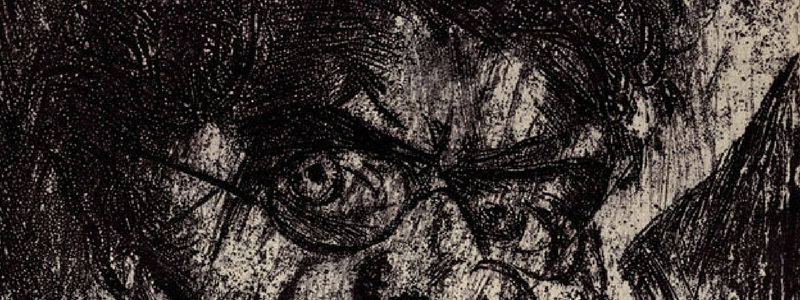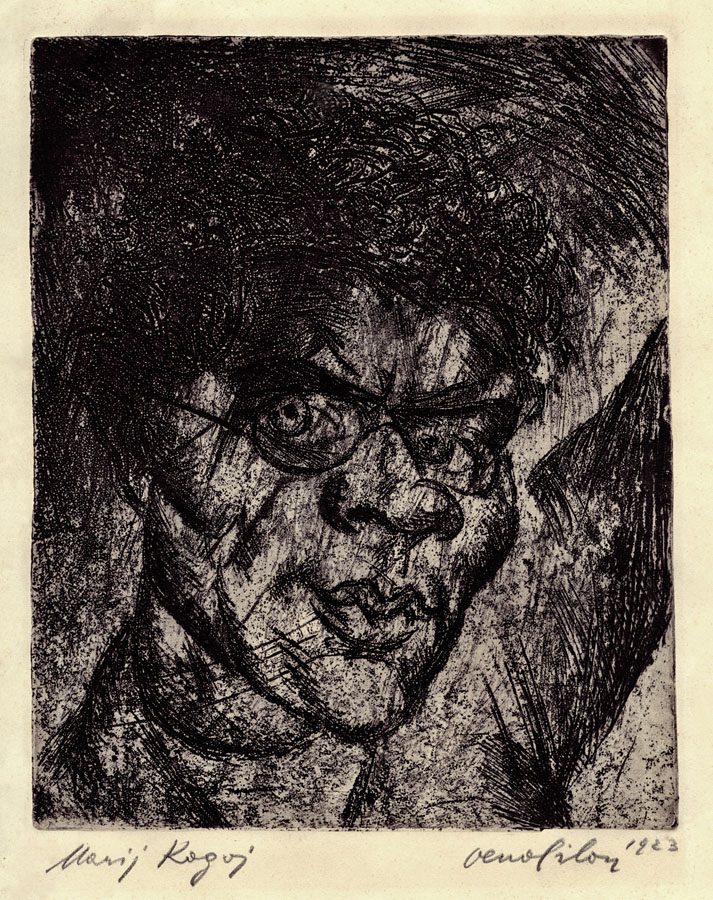Artist Veno Pilon painted a portrait of composer Marij Kogoj in 1923. The painting forms part of the core collection of the Pilon Gallery in Ajdovščina.
Marij Kogoj
Composer Marij Kogoj (1892–1956) is a notable representative of early twentieth-century European music, when new compositional techniques were adopted and new approaches created that either redefined tonality or abandoned it. Emerging at the turn of the 20th century, expressionism deepened the nineteenth-century aesthetic that sought to depict an expressly subjective perspective, taking it to new heights and resulting in highly intimate articulations of inner human recesses. The new compositions resembled psychological maps or psychograms, and renounced the aesthetic conventions of the ‘beautiful’ in accordance with the spirit of the time, which encouraged the development of Freud’s psychoanalysis. Surrounded by these impulses, it was in Vienna in 1914 that Kogoj began to study composition with Franz Schreker, and instrumentation under the celebrated Arnold Schoenberg. That same year, Kogoj scored his remarkable choral work, Trenotek (Moment), which generated widespread interest and, published in Novi akordi (New Chords), heralded the emergence of musical expressionism in the broader Yugoslav context. Viewed from the perspective of Slovenian musical culture, Marij Kogoj’s art should be considered as a ‘leap’ from traditional attempts at a national opera – examples of the genre continued until as late as 1923 – to an expressionistic opera, rather than a shift from operetta in “the old numerical style” to expressionistic musical drama, and as step beyond nationalism into supranational symbolism.
Regarded as Kogoj’s crowning achievement, the opera Črne maske (Black Masks, 1927) takes as its text the eponymous play by Leonid Andreyev, and through its literary symbols addresses issues of the human soul and identity. This solitary example of expressionistic opera in Slovenia utilises the symbolism of inner conflict, the human struggle with one’s hidden darkness. On a par with great operatic masterpieces, works as monumental as Salome and Elektra by Richard Strauss, according to music scholars, Kogoj’s opera is a vital work that placed Slovenian music creativity in the context of contemporary European trends.
It was a change of identity, i.e. a personality crisis in his early youth, that influenced Marij’s exploration of intimate human psychology. Born in 1898 as Julij, the composer’s split identity resulted from the tragic death of his younger brother, whose name he had no choice but to adopt, being called by his brother’s name by adults. When he was six years old, his father died, and a year later the children were left without their mother, who it is presumed went to Egypt to work as a wet nurse, becoming a so-called Alexandrian woman.
Although Kogoj’s contemporaries recognised the value of his advanced music idiom, they did not share his artistic ideas. Furthermore, the conservative public received his works with equal reserve. For want of like-minded fellow musicians, Kogoj joined the community of young writers and artists, members of the Slovenian avant-garde. This sense of isolation and of being different that filled the composer is captured in the group painting entitled Slovenian Composers by Saša Šantel, displayed in the Slavko Osterc Hall of the Slovenian Philharmonic. Kogoj’s conviction that, “all art should be futuristic – that is, express a vision of the future – otherwise, it is of no use”, garnered only a few adherents in Slovenia, although it generated much attention.
Having been diagnosed with schizophrenia, Kogoj’s mental illness greatly affected his work after 1932. Hindered in his musicals efforts, Kogoj’s disability possibly contributed to the fact that in the post-war period more progressive musical impulses in Slovenia took longer to germinate.
Maia Juvanc

